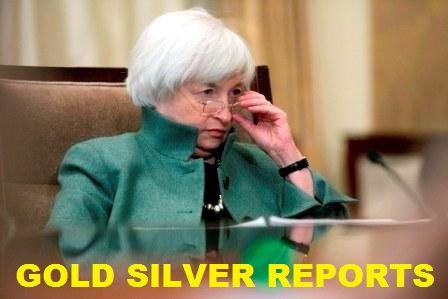
>>>Clues on how policy makers are thinking about the path of future interest-rate increases following their decision last month to end a seven-year era of near-zero borrowing costs. Chair Janet Yellen reiterated at a press conference after the December meeting that tightening would happen gradually, but “future policy actions will obviously depend on how the economy evolves.”
The minutes may shed light on the internal debate over which priority takes precedence — slow-moving increases or a reliance on data to guide the path, said Omair Sharif, rates sales strategist at SG Americas Securities in New York.
“What’s the push-and-pull going to be like on the path between gradual and data-dependency?” Sharif said. “You also are going to want to look for: How confident are they that they are going to be able to go four times?”
The Fed’s quarterly economic projections prepared for the December FOMC imply the central bank will raise rates four times in 2016. By contrast, federal funds futures contracts suggest market participants expect only two rate increases next year. San Francisco Fed President John Williams said Monday that he sees three-to-five this year if the economy stays on his projected track.
Inflation Outlook
>>>Any discussion on the inflation outlook. The labor market has made significant progress since the 2007 to 2009 recession — unemployment has halved in the past six years to 5 percent in November. Price pressures are another story, holding stubbornly below the Fed’s 2 percent goal.
The Fed’s preferred inflation index rose just 0.4 percent in the 12 months through November, and the median of policymakers’ projections see that picking up to 1.6 percent in 2016. What informs that forecast — whether it’s a stabilization on the part of a rising dollar or falling oil prices, or simply continued strengthening in consumer demand — will give Fed-watchers something to monitor in trying to assess whether the central bank’s criteria for follow-up rate increases are being met.
Also at issue is whether the Fed will raise rates again based on the expectation that prices will move higher, or whether they want to wait for evidence that price pressures are indeed advancing. In her post-FOMC press conference, Yellen said policy makers will monitor “actual and expected progress.”
“What was not clear in the December meeting is whether they changed their reaction function,” said Thomas Costerg, a senior U.S. economist at Standard Chartered Bank in New York. Costerg expects policy makers will rely on their forecasts for the next rate hike, which he anticipates in March. Still, going forward “it seems from Yellen’s messaging that they are going to base the 2016 hikes more on actual inflation, rather than expected inflation,” he said.
No Dissents
>>>Any explanation as to why there were no dissents. In the months leading up to the December FOMC meeting, several voting policy makers, including governors Lael Brainard and Daniel Tarullo, signaled a preference for keeping rates near zero for longer. So what convinced them to fall in line and vote for the rate rise last month?
“It will be very interesting to see what concerns some of the more dovish members of the FOMC had, what the discussion around their concerns was like, and what factors made them comfortable with the decision that was made,” said Emanuella Enenajor, a senior economist at Bank of America Merrill Lynch in New York.
>>>Keep an eye out for any details on the Fed’s game-plan for shrinking its balance sheet, which has risen to $4.5 trillion from about $900 billion in 2008. When asked whether the Fed might need to have a larger balance sheet than historically, Yellen said “a lot has changed since pre–financial crisis in terms of the financial system, and we are studying — we are engaging in a project at this time to consider what our long-run operating framework should look like.”
While the the Fed will internally debate the appropriate size of its future balance sheet, it will probably be some time before clear outlines on the plan emerge, said Costerg. “You could see a bit more detail than what Yellen said, but I’m not sure that we’ll learn a lot” in the minutes, he said. >> Neal Bhai Reports